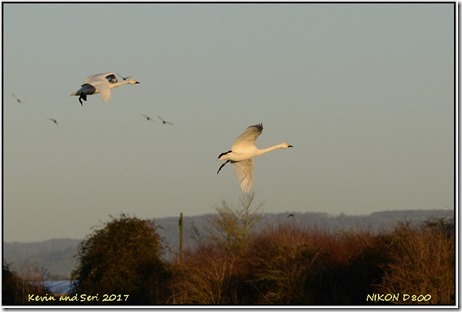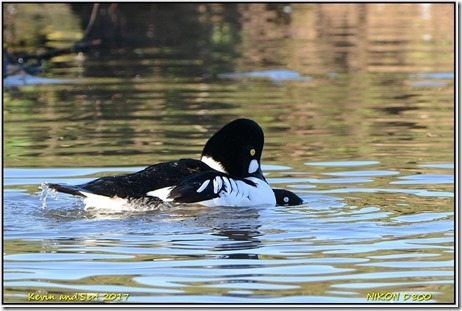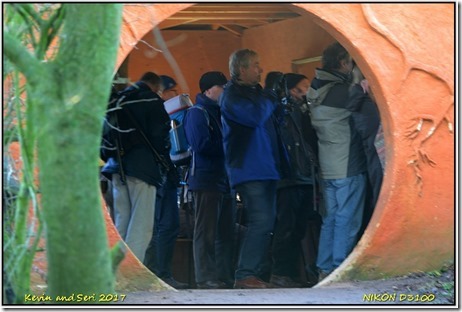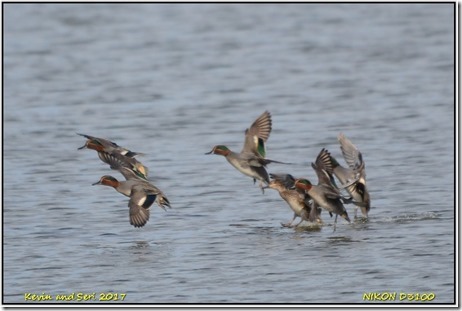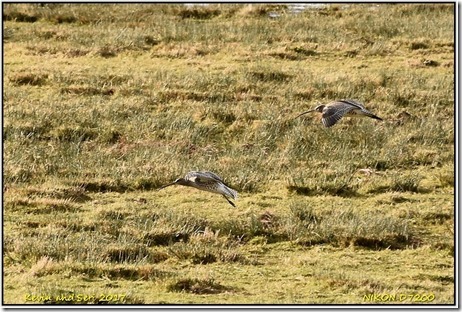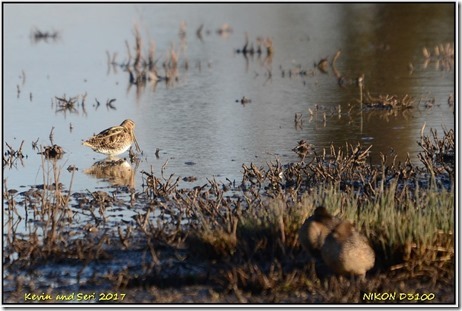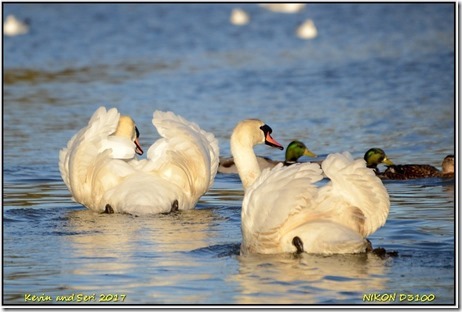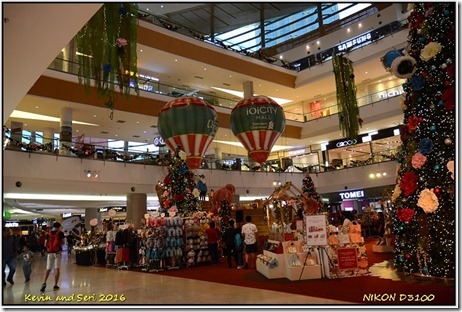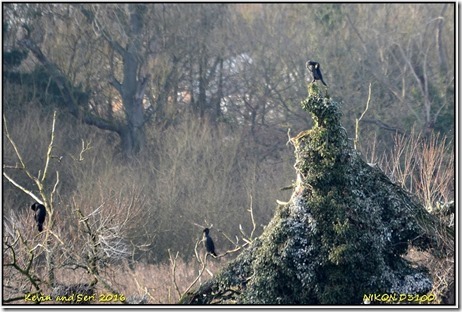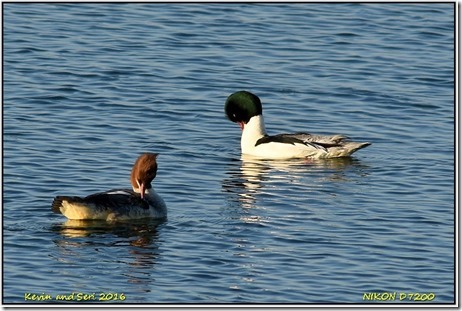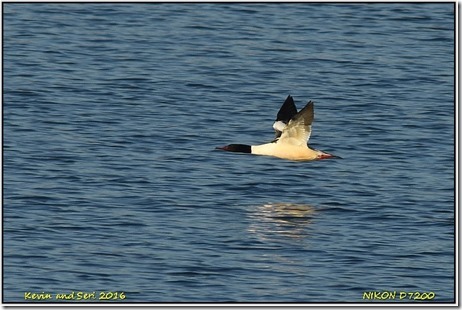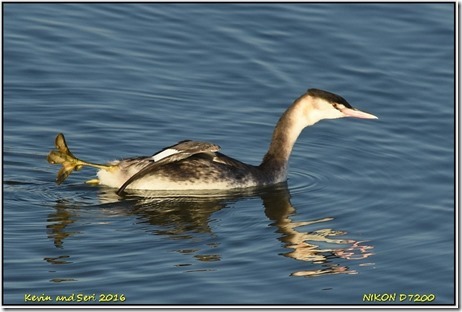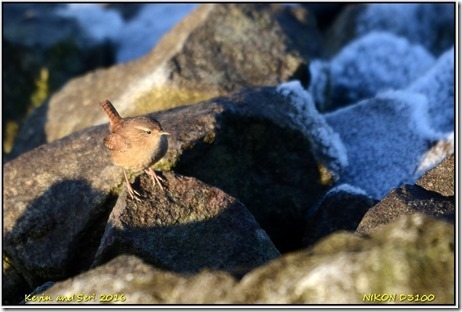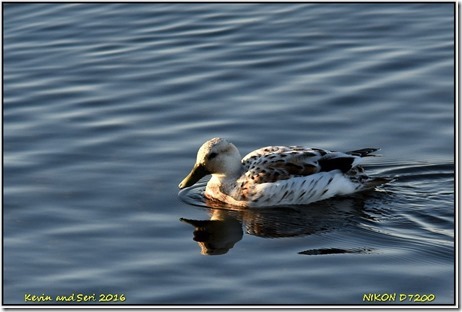January opens
The box of the year
And brings out days
That are bright and clear.
And brings out days
That are cold and gray,
And shouts, "Come see
What I brought today!"
~Leland b. Jacobs~
January offered a chilly reception. Snow fell in some parts of the UK after Arctic gales brought the white stuff and freezing temperatures. We only got the later![]() . The so-called ‘thundersnow’ was caused by air coming from the Canadian Arctic in an air mass called an Arctic Maritime. We did experienced sleet after heavy rain swept the area and that was it. I was a bit jealous seeing the snowy landscapes from other parts of the UK. But, c'est la vie.
. The so-called ‘thundersnow’ was caused by air coming from the Canadian Arctic in an air mass called an Arctic Maritime. We did experienced sleet after heavy rain swept the area and that was it. I was a bit jealous seeing the snowy landscapes from other parts of the UK. But, c'est la vie.
We started the new year by renewing our membership at Slimbridge WWT. We left the casa at 9.35 am and it was a frosty, cold but bright morning with temperatures just at 1.6C. There were ice on the road and we drove past police diverting drivers from the icy roads. We also came across a car that had slipped and crashed onto the barriers. Thankfully, the emergency services were already there to assist.
Since it was still the holiday season, Slimbridge was buzzing. By the entrance, there were signs to inform visitors to step on special mats that were soaked with disinfectant. This procedure was to prevent the spread of avian flu. They also stopped selling bird seeds to the visitors as a precaution. There was a very long queue at reception but we were ushered straight to the renewal desk. Most of the visitors were heading straight to the Kingfisher Hide because of the sightings of at least 3 bitterns.
We followed our usual route and headed straight to Rushy hide walking past the empty Caribbean Flamingos enclosure. All the pink beauties were kept indoors because of the cold weather. Being tropical birds, they required housing during winter to protect them from frost bite. Although the feathers were natural insulator from heat and cold, birds from these areas weren’t equipped to handle freezing temperatures. We could hear them cackling and grunting away in their heated houses.
We were quite surprised to see Rushy Hide packed. I thought most of them were at Kingfisher Hide. While waiting for a space, I found out that they were looking at a Little Stint which was feeding on an island quite a distance away among the sleeping Teals and Shelducks. This passage migrant was a tiny wading bird with a short straight fine black bill and medium-length black legs. We were very lucky to have seen it because very few spent the winter here as most migrated to Africa.
Apart from the Little Stint, there were the usual culprits and they seemed to have trebled in numbers. Pintails were flying in and out with their long, pointed wings, slim bodies, long necks and white edged speculum. The black and white Lapwings with their long, curved crests on their heads were busy foraging for earthworms and insects. Tufted Ducks with their spectacular diving were sieving food from the bottom of the lake while the Pochards were dabbling and upending nearby.
Bewick Swans were also flying in and out. We loved photographing their slow, steady flight and the way their legs hang out as they were about to land, dropping onto the water at steeper angles as if bracing themselves for a mighty crash. They were quite noisy too as they were about to land, a warning sign to those in the water to move away. They then sailed down and water skied to a halt and ended with a belly-flop.
After that, get ready for the excited greetings as the family group welcomed them back. They were noisy, with constant low babbling in the water and indulging in greeting displays, reminiscent of excited dogs. They then flapped their wings with more musical honkings. After calming down, they started feeding sticking their head underwater or upending while swimming for aquatic vegetation.
Upon the brimming water among the stones
Are nine-and-fifty swans.
The nineteenth autumn has come upon me
Since I first made my count;
I saw, before I had well finished,
All suddenly mount
And scatter wheeling in great broken rings
Upon their clamorous wings.
I have looked upon those brilliant creatures,
And now my heart is sore.
All's changed since I, hearing at twilight,
The first time on this shore,
The bell-beat of their wings above my head,
Trod with a lighter tread.
Unwearied still, lover by lover,
They paddle in the cold
Companionable streams or climb the air;
Their hearts have not grown old;
Passion or conquest, wander where they will,
Attend upon them still.
But now they drift on the still water,
Mysterious, beautiful;
Among what rushes will they build,
By what lake's edge or pool
Delight men's eyes when I awake some day
To find they have flown away?
~William Butler Yeats ’The Wild Swans at Coole~
Then we headed to the next hide. While we were walking, we heard a repeated series of notes ‘seoo, seoo, seoo, tidic, tidic, tidic, tew, tew, tew’. It was a Mistle thrush. The repetition of the three notes, likened to a ‘harlot’s chortle’ by Clement of Alexandria had resulted in the old English name of ‘thrice cock’. Whoopsie!!! It flew off with several wing beats separated by short glides.
At Martin Smith Hide, more Pintails were surface feeding and dabbling on the aquatic plants. They were joined by our smallest duck, the Teals with the drake looking splendid in their chestnut and green plumage. Carpets of Wigeons were grazing on the tack field. Three Common cranes were feeding at the further end of the field. A Buzzard perched on a stone column was keeping a beady eye on what was going on the ground.
We walked back into the main grounds through the boardwalk. At the Tundra Pool, Babe was having fun with his new toy. There were a lot of activities to keep him busy. Among them was capturing the mating behaviour of a pair of Golden Eye, compact ducks with large, domed heads and yellow eyes.
The grey female with brown head and yellow-tipped bill was laying low in the water. From time to time, the drake with his glossy greenhead and oval white patch performed a courtship display known as the ‘head-throw-kick-display’. He stretched his head forward along the water and then snapped it rapidly upward over his back, bill pointed skyward, while uttering a shrill, two-noted call. Then he swung his orange feet forward, sending up a small shower in front of him.
In water fowl mating, it was the female which chose her mate. Groups of males performed for her, and she picked her favourite with the best plumage and the best display. While he was displaying, she assumed the prone posture by laying flat on the surface of the water and very rarely made any discernible movement. Then she responded to the chosen one by ‘head-forward’ when she lowered her head and neck and swung it forward. The male mounted her and looked like trying to drown her. And then it was over. Both of them had a bath and swam opposite directions![]()
Round clouds roll in the arms of the wind,
The round earth rolls in a clasp of blue sky,
And see, where the budding hazels are thinned,
The wild anemones lie
In undulating shivers beneath the wind.
Over the blue of the waters ply
White ducks, a living flotilla of cloud;
And, look you, floating just thereby,
The blue-gleamed drake stems proud
Like Abraham, whose seed should multiply.
In the lustrous gleam of the water, there
Scramble seven toads across the silk, obscure leaves,
Seven toads that meet in the dusk to share
The darkness that interweaves
The sky and earth and water and live things everywhere.
Look now, through the woods where the beech-green spurts
Like a storm of emerald snow, look, see
A great bay stallion dances, skirts
The bushes sumptuously,
Going outward now in the spring to his brief deserts.
Ah love, with your rich, warm face aglow,
What sudden expectation opens you
So wide as you watch the catkins blow
Their dust from the birch on the blue
Lift of the pulsing wind—ah, tell me you know!
Ah, surely! Ah, sure from the golden sun
A quickening, masculine gleam floats in to all
Us creatures, people and flowers undone,
Lying open under his thrall,
As he begets the year in us. What, then, would you shun?
Why, I should think that from the earth there fly
Fine thrills to the neighbour stars, fine yellow beams
Thrown lustily off from our full-blown, high
Bursting globe of dreams,
To quicken the spheres that are virgin still in the sky.
Do you not hear each morsel thrill
With joy at travelling to plant itself within
The expectant one, therein to instil
New rapture, new shape to win,
From the thick of life wake up another will?
Surely, and if that I would spill
The vivid, ah, the fiery surplus of life,
From off my brimming measure, to fill
You, and flush you rife
With increase, do you call it evil, and always evil?
~D.H. Lawrence, ‘Mating’~
After all that excitement, we calmed down by watching this little beauty having a wash. The Grey wagtail was more colourful than its name suggested with slate grey upper parts and distinctive lemon yellow under-tail. Their tail was noticeably longer than those of Pied and Yellow wagtails. They were summer visitors to the UK, arriving in April and leaving in September to October so I was very surprised to see it at this time.
Grey wagtails were energetic little birds and always on the move, frantically bobbing, ducking and dashing about, wagging their tails continually. They were versatile predators, catching small dragonflies on the wing, a variety of insects off the ground, and fishing tadpoles out of shallow water. After the bath, it flew off with a delightful and melodious trilling
We then headed to Zeis Hide to see if the Bittern was out and about. The hide was packed with photographers, twitchers and visitors looking through binoculars, cameras and spotting scopes. We’d to trawl through tripods that were blocking the path, one of my biggest bug-bear when people just leave their equipment laying about. Cetti warblers were skulking somewhere in the reeds, heard but not seen. Flocks of Widgeons flew in and started feeding in the field.
Then off to Kingfisher Hide but it was standing room only. Someone told us that someone was parked there since the reserve opened at 9 am. That was either dedication or just being selfish. We went to the Van de Bovenkamp Hide and made ourselves comfortable. Nothing much but someone did spot the Bittern in its usual pose, blending beautifully against the reeds. It was just too far to be photographed. Then it was a long walk back to the car and back home.
At work, I was summoned to the Librarian’s office. Oops… what have I done. While waiting outside his office, his PA informed me that it was a presentation for my 10 years service at the library. Whoop…whoop. I thought they’d forgotten about it because it was 6 months too late. It was a short presentation where I was given a PEN!!!! What??? After receiving some lovely praises for the hard work, commitment etc etc, I went back to my office, showing off to my colleagues the product of working my a--- off. I have to work another decade to be taken out for dinner. Something to look forward to eh???
I ended the month with another trip to Slimbridge. We tried to go monthly to get our money’s worth from our membership subscription. It was raining that morning but the sun came out when we arrived. There were still disinfected mats at the entrance and the flamingos were still indoors. They don’t sound too happy being stuck indoors as they could see the sun shining through the windows.
We headed straight to Rushy Hide which was empty of visitors and not much on the water too. I think most of the waders and fowls were feeding on the nearby River Seven mudflats. A flock of Teals flew in after their feeding rendezvous with their in flight ‘krit krit ‘ calls joining the Tufted Ducks. The usually boisterous Shelducks were fast asleep on the islands.
Then we went off to Martin Smith Hide where more Teals were dabbling noisily. The males whistled, not loud but very clear and far-carrying, whilst the females had feeble quacks. The striking Northern Pintails drake were busy preening while the scalloped and mottled light brown females were having a snooze. Wigeons were whistling contentedly as they dabbled at the water’s edge.
We spotted at least half a dozen Common Cranes in the tack field. We headed to Robbie Garnett Hide where we could get a closer look. They were foraging on the marshy land, probing around with their bills for any edible organisms. They’d loud trumpeting calls, given in flight and displays. They were pairing up with dancing displays, leaping with wings uplifted. But, it was still early for them to start a family..
“When the companies were thus arrayed, each under its own captain, the Trojans advanced as a flight of wild fowl or cranes that scream overhead when rain and winter drive them over the flowing waters of Oceanus to bring death and destruction on the Pygmies, and they wrangle in the air as they fly; but the Achaeans marched silently, in high heart, and minded to stand by one another.”
~Homer ‘The Illiad’~
We walked back into the main ground, heading for Zeiss Hide. We were hoping to catch a glimpse of the Bitterns again. Loud bursts from the Cetti Warblers broke up the silence. Flocks of Lapwings with their slow, irregular wingbeats and shrill, wailing cries were circling the reserve. Then a pair of speckled brown plumaged Curlews flew in and wheeling above the fields in graceful, droop-winged flight and landed not far from the hide.
The haunting calls of Britain largest waders with the rich whistling ‘corlee corlee corlee’ enlivened the winter afternoon, bubbling up and swelled to a crescendo before gently dying away. Described by Ted Hughes as a ‘web-footed god of the horizons’, the curved beak silhouette was as distinctive as their voice. Their mottled-brown plumage made for effective camouflage against the marshland and mudflat feeding grounds, meant they could go about their business unnoticed, prying out invertebrates such as ragworm, earthworms, leatherjackets, beetles, spiders and caterpillars with their purpose-built curved bills. Soon, they would migrate to their breeding grounds, mostly in upland areas, to raise their chicks in areas of rough pasture, heather moorland and wetlands.
We gave Kingfisher Hide a miss and headed straight to Hogarth Hide. We were again surprised to find this secluded hide nearly full. We managed to get a seat and joined the on-lookers. Then we played counting the Common Snipe game. These skulking medium-sized waders were so well camouflaged with their cryptic patterning of browns, blacks and white against the reeds and mudflats.
We watched them using their greatly elongated bill, probing under the moist substrate for insects, earthworms and crustaceans. Food on the surface was located by sight and picked up, but prey under the ground was located using the touch-sensitive sensory pits at the tip of the flexible bill . They typically fed at dawn and dusk, often in small groups, on land or in shallow water, but usually don’t stray far from cover. They needed patches of cover to hide in and to provide a safe lookout for predators.
We then headed back to the car for refreshments. We planned to come back after fuelling up. We made a pit stop at the gift shop because I wanted to get some cards. While I was browsing, Babe met Greenman, a Brandon regular, and his family. We chatted for quite a while. It was lovely seeing them again. After we’d our picnic, we decided to head home.
“The Old Year has gone. Let the dead past bury its own dead. The New Year has taken possession of the clock of time. All hail the duties and possibilities of the coming twelve months”.
~Edward Payson Powell~


